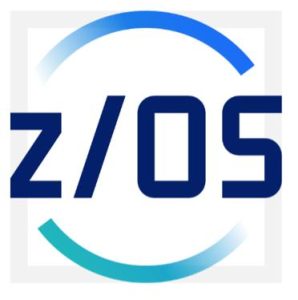In the ever-evolving world of enterprise computing, IBM’s z/OS continues to stand as a cornerstone for mission-critical workloads. From banking to healthcare to government systems, z/OS powers the backbone of industries that demand reliability, security, and performance at scale.
At Gevinst Technologies, we understand that z/OS administration is both an art and a science. It’s about keeping systems running flawlessly, managing resources efficiently, and safeguarding data—all while preparing for the next wave of innovation. In this article, we’ll explore the core principles, practical tips, and proven best practices every z/OS administrator should master.
Understanding the Role of a z/OS Administrator
A z/OS administrator ensures the smooth functioning of the IBM mainframe environment. This includes:
System Configuration – Managing PARMLIB members, IPL procedures, and workload definitions.
Performance Tuning – Monitoring CPU, memory, and I/O usage to eliminate bottlenecks.
Security Management – Implementing RACF, ACF2, or Top Secret controls for user access.
Backup & Recovery – Ensuring DR (Disaster Recovery) readiness with proper backup cycles.
Patch & Upgrade Management – Applying PTFs (Program Temporary Fixes) and z/OS version upgrades.
Tips for Effective z/OS Administration
1. Automate Routine Tasks
Use REXX, CLIST, or JCL automation scripts to reduce manual intervention. Automation helps prevent human error, improves efficiency, and ensures consistent execution of repetitive jobs.
2. Monitor Proactively
Implement SMF (System Management Facility) and RMF (Resource Measurement Facility) reporting. Early detection of anomalies—such as spikes in CPU usage or unusual I/O patterns—can prevent outages before they escalate.
3. Keep Security Tight
Regularly audit RACF/ACF2/Top Secret profiles. Enforce the principle of least privilege to minimize insider threats. Stay updated with IBM security bulletins and patch known vulnerabilities promptly.
4. Documnent Everything
A well-maintained runbook is a lifesaver during incidents. Document IPL steps, recovery procedures, and configuration changes. This ensures smooth handovers and reduces troubleshooting time.
5. Test Before Production Changes
Use test LPARs (Logical Partitions) to validate new configurations, PTFs, or workload changes. A controlled test environment minimizes disruption to production workl
Best Practices for Long-Term Stability
1. Performance Optimization
Regularly review RMF and SMF reports to identify slow batch jobs, high CPU usage applications, or long-running queries. Fine-tune Workload Manager (WLM) service classes to prioritize critical workloads.
2. Disaster Recovery Readiness
Schedule regular DR drills. Test data restore procedures to ensure backup integrity. Keep an up-to-date inventory of system software, hardware, and licenses.
3. Capacity Planning
Track usage trends and forecast growth. Use IBM Capacity Provisioning Manager (CPM) to dynamically adjust resources during peak loads.
4. Change Management Discipline
Adopt a formal change management process with approvals, rollback plans, and impact analysis. Avoid ad-hoc modifications in production.
5. Continuous Learning
z/OS evolves constantly. Encourage your team to attend IBM TechU, SHARE conferences, or online mainframe courses
The Human Side of z/OS Administration
While the technical aspects are crucial, communication and collaboration are equally important. A successful z/OS administrator works closely with developers, network teams, and storage administrators to ensure system harmony.
Regular knowledge-sharing sessions, mentoring junior staff, and maintaining a culture of documentation can make the difference between firefighting and strategic system management.
Why Partner with Gevinst Technologies
At Gevinst Technologies, we help organizations maximize the value of their mainframe investments. Our z/OS specialists bring decades of combined experience in:
Performance tuning and workload optimization
RACF/ACF2/Top Secret security audits
Disaster recovery strategy and implementation
Automation scripting for operational efficiency
Migration planning for z/OS upgrades
Whether you’re looking to stabilize existing operations or modernize your z/OS environment, our team ensures your mainframe runs with peak reliability, security, and efficiency.
Final Thoughts
Mastering z/OS administration is not about memorizing commands—it’s about understanding how the system behaves, predicting issues before they occur, and constantly evolving your skills.
By automating routine tasks, monitoring proactively, securing diligently, and planning for growth, administrators can ensure their z/OS environments remain robust for years to come.
At Gevinst Technologies, we believe that the best z/OS administrators are those who blend deep technical expertise with a mindset of continuous improvement. The mainframe may be decades old, but with the right stewardship, it remains the most reliable computing platform on the planet.



